Never Before

“He asked if he could borrow a paper and pencil to practice drawing,” wrote Steve Stanley.
No, he wasn’t a little kid. He was an older man of the Kovol tribe, infected with the idea that he and his fellow villagers would soon be learning to read and write.
“Over the last 75 years,” wrote pilot’s wife Becky Lesicka, “[Ethnos360] in Papua New Guinea has helped the people of around 75 language groups learn to read and write in their heart language. A literacy program has most recently been developed for the Kovol people, subsistence farmers living in small hamlets spread among the Adelbert mountains. Their language had never before been written down until the missionary team ... began the process of learning their language and culture in 2020.”
Kovol team member Steve Stanley gave some details: “Our team has just reached a significant milestone with the completion of the first draft of our literacy materials. We spent 2 weeks of focused time working on them with the help of two literacy consultants, and we now have 87 lessons that teach all the syllables needed to read in the Kovol language. Some lessons introduce new syllables, and some lessons are practice lessons that use syllables that have already been introduced to tell short stories for practice reading.”
“Our Kovol friends have been with us every day for the last few weeks. We told them clearly that since this was a two-week-long effort, they didn’t have to attend every day. [But] seeing people attending every day, there at 8 a.m. sharp, is encouraging,” wrote Steve.
Becky, wife of Kodiak pilot Travis Lesicka, is delighted to see this progress, since Ethnos360 Aviation sustains the Kovol team in their remote village. “The exciting part of the process is that the team had 40-plus Kovol people on hand to help them each day of the program’s development. They illustrated stories, helped check to see if the stories communicate, suggested words to use and rejoiced along with the team with each page completed.”

Steven described the effort: “We handed out sheets of paper and pencils, and groups worked at drawing pictures to go with our stories. The community ended up drawing 82 illustrations for us.” Here’s an example for a story about a snake in the bamboo:

An illustration for a story about a snake in the bamboo.
“A highlight,” wrote Steve, “was a mock lesson we taught on the first pages of Primer 1. We invited some people up to participate, and the beaming smiles on their faces as they learned to read — and called out sounds they had learned — were amazing.”
Now the team needs to go through a meticulous checking process of all the material, including formatting it for printing. Since the literacy program will eventually be put into the hands of the Kovol people, the team also must produce a step-by-step teacher’s manual in the Kovol language.
Steve says, “People are excited to learn to read.” Regarding the man who borrowed paper and pencil to practice drawing, Steven said, “His request certainly made us take note that this might be one of the guys who should be part of the first literacy class in the ... future.”
As we say over and over again, those of you who give or pray have a part in this ministry. Without consistent aviation, teams like the Kovol could not stick to their work and even have consultants come in to help them produce literacy materials. Thank you when you give to make flights available and affordable. As Becky wrote, “Pray for this new literacy program to go well and to lay the foundation for understanding the Bible in their heart language.”
